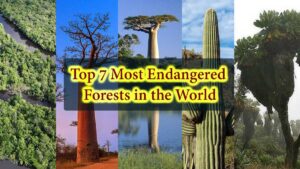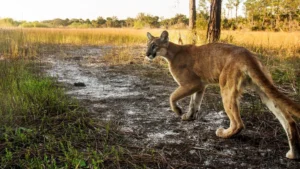
Forests, often referred to as the lungs of our planet, are home to a vast array of wildlife, many of which are now critically endangered. These majestic ecosystems are under constant threat from deforestation, climate change, and human activities. In this article, we will explore some of the most endangered species residing in forests and delve into the conservation efforts aimed at saving them.
The State of Forest Ecosystems
Forests cover approximately 31% of the Earth’s land area, but their health is rapidly deteriorating. Deforestation, driven by agriculture, logging, and urban expansion, has led to habitat loss for countless species. According to the World Wildlife Fund (WWF), nearly 80% of Earth’s terrestrial biodiversity is found in forests, making their preservation crucial for maintaining global biodiversity.
Most Endangered Species in Forests
- Sumatran Tiger (Panthera tigris sumatrae)
The Sumatran tiger, native to the island of Sumatra in Indonesia, is one of the most endangered big cats in the world. With fewer than 400 individuals left in the wild, this majestic predator faces severe threats from habitat loss due to illegal logging and palm oil plantations. Conservation organizations like the Sumatran Tiger Conservation Program are working to protect its habitat and combat poaching.
- Mountain Gorilla (Gorilla beringei beringei)
Mountain gorillas inhabit the dense forests of the Virunga Mountains in Central Africa. Despite conservation efforts, the population of mountain gorillas remains critically endangered, with fewer than 1,000 individuals left. The primary threats include habitat destruction, poaching, and diseases. The Dian Fossey Gorilla Fund and the World Wildlife Fund are leading efforts to protect these primates through anti-poaching measures and habitat restoration.
- Javan Rhino (Rhinoceros sondaicus)
With fewer than 75 individuals remaining, the Javan rhino is one of the rarest large mammals in the world. Native to the Ujung Kulon National Park in Indonesia, the Javan rhino faces threats from habitat loss and natural disasters. Conservation efforts focus on habitat protection and monitoring, with organizations like the International Rhino Foundation playing a crucial role.
- Kakapo (Strigops habroptilus)
The Kakapo, or owl parrot, is a critically endangered flightless parrot native to New Zealand. With a population of around 200 individuals, the Kakapo is facing extinction due to habitat destruction and predation by introduced species. Conservation efforts include habitat restoration and predator control, managed by the Kakapo Recovery Program.
- Borneo Orangutan (Pongo pygmaeus)
The Borneo orangutan, native to Borneo Island, is critically endangered with fewer than 55,000 individuals remaining. Deforestation and habitat fragmentation for palm oil plantations are the primary threats. Conservation programs, such as the Borneo Orangutan Survival Foundation, focus on habitat protection, rehabilitation of orphaned orangutans, and community education.
Conservation Efforts and Strategies
- Protected Areas and Reserves
Establishing protected areas and reserves is a fundamental strategy in forest conservation. These areas provide safe havens for endangered species and help preserve their natural habitats. Internationally recognized protected areas, such as the Virunga National Park and Ujung Kulon National Park, play a critical role in the survival of many species.
- Anti-Poaching Initiatives
Poaching remains a significant threat to forest-dwelling species. Anti-poaching initiatives involve training rangers, using technology such as drones and camera traps, and strengthening law enforcement to prevent illegal hunting and trade.
- Habitat Restoration
Restoring degraded forest habitats is essential for the survival of endangered species. Reforestation projects and habitat rehabilitation efforts aim to rebuild ecosystems and provide suitable living conditions for wildlife. Organizations like the Rainforest Trust focus on acquiring and restoring critical forest habitats.
- Community Involvement
Engaging local communities in conservation efforts is crucial for sustainable outcomes. Community-based programs that promote eco-friendly practices, provide alternative livelihoods, and raise awareness about the importance of forest conservation can significantly impact the protection of endangered species.
- International Collaboration

Conservation is a global effort that requires cooperation between governments, NGOs, and local communities. International agreements, such as the Convention on Biological Diversity (CBD) and the Convention on International Trade in Endangered Species (CITES), provide frameworks for protecting endangered species and their habitats.
Conclusion
The battle to save endangered species in forests is ongoing and requires a multifaceted approach. By understanding the threats faced by these species and supporting conservation efforts, we can contribute to preserving the rich biodiversity of our planet. The survival of species such as the Sumatran tiger, mountain gorilla, and Javan rhino hinges on our collective actions to protect their habitats, combat poaching, and restore ecosystems. Through continued dedication and collaboration, we can work towards a future where forests thrive, and their inhabitants flourish.


